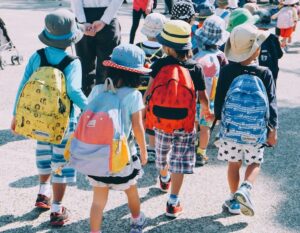
Did you know that Chinese is the most spoken language in the world? Here’s how kids benefit from bilingual learning
We all know how important it is to be bilingual in our modern, fast-paced society – kids are better focused, have better listening skills, become more logical and can multi-task more efficiently than their monolingual peers [source]. But what happens when your child isn’t just learning a second language, but also using it to learn?
Here are 5 ways your child can reap the benefits of bilingual learning!

-
Cognitive development
Problem solving, memory, multi-tasking, and decision making are all components that can be strengthened through immersive education and the ability to switch between two languages. Students of immersive education learn to process and manage two languages, which are simultaneously activated whenever one of the languages is used. Over time, this strengthens memory capacity and the ability to multi-task.
-
Academic achievement
Research suggests that English-proficient immersion students are capable of achieving as well as, and in some cases better than, non-immersion peers on standardized measures of reading and math (Lindholm-Leary, 2011). In studies covering six states and 37 districts, Thomas and Collier found dual-language students to have higher test scores and greater academic achievements. Being bilingual could help your kiddo perform better in all their subjects!
-
Employment opportunities
Being proficient in more than one language has multiple employment benefits. Many jobs and careers require involvement with international companies that require an additional language.

-
Cultural appreciation
Mastering another language assists in the understanding of and the experience of other societies and cultures. Bilingual and multilingual people have access to foreign media, literature, and the arts. They are able to connect with other people in a new and different way due to their expanded worldview and learning to be accepting of the worldview of others.
-
Social development
Bilingual people are known to have better communication and listening skills. In order to be bilingual, you have to pay attention to other people and the language they are speaking to you in. Being able to say “good morning” to your English-speaking teacher, and “bonjour” to your French-speaking mother requires skills of inhibition and task switching which are subsets of an ability called “executive function” (Kamenetz, 2016).
Immersion programs are designed to fully encompass all aspects of education in a foreign language. Immersion students learn math, science, history, and grammar in the chosen language from a young age, and grow up to join approximately 40 percent of the world’s population who are bilingual (Ansaldo, 2008; De Bot, 1992). In Singapore American School‘s Chinese Immersion Program, students work toward building fluency in Chinese while building the foundation for academic success. The Chinese Immersion program at SAS was first launched with two immersion kindergarten classes in 2017–18, and will roll forward each academic year, bringing the program across kindergarten through fifth grade by 2022–23.
Keen to learn more, mamas? Singapore American School has two upcoming Chinese Immersion Open Mornings on 31 January and 28 February. You’ll hear from SAS’s director of World Languages to get an overview of the Chinese Immersion program, then take a tour of the dedicated immersion classrooms to see students and teachers in action. The Admissions team will also be available to answer any questions and discuss the application process. See below for registration deets!
All the Details!
What: Open Morning to learn more about the Chinese Immersion Program at Singapore American School
When: Friday 31 January and Friday 28 February 2020 (timings TBC)
Where: Singapore American School
How much: FREE!
RSVP: Email [email protected] to express your interest and reserve your slot.
Singapore American School, 40 Woodlands Street 41, Singapore 738547, Tel: (+65) 6363 3403, www.sas.edu.sg






 View All
View All




 View All
View All










 View All
View All





